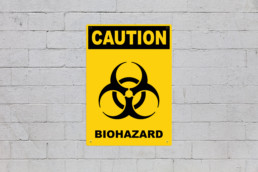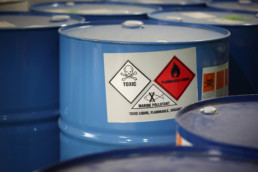Welcome back to Environmental Fluids! Today we are going to talk about one of the hottest topics being discussed among those in the surfactant business. Surfactant selection has become an increasingly daunting task for the chemists behind the production of commercial formulations, especially in the past couple of decades.
Growing competition, cost efficiency and quality of performance made the process tough enough already, but environmental awareness has certainly changed the landscape of the chemical market for good.
Where previously a company could manufacture their goods with little observation in terms of their ingredients beyond their final commercial qualities, there are now plenty of environmental parameters to keep an eye on, be it in the industrial processes used to manufacture them or the final steps to biodegradation involved once the products have been disposed of.
In this sense, chemical compounds that were once used without any type of regulation or measure have since been discovered to be harmful to aquatic and/or terrestrial life, and now the great race for efficient replacements has begun. In this article, we will talk about one of the biggest chemical agents to be caught in this controversy in recent decades – alkylphenol ethoxylate surfactants, or APEs – and discuss what Environmental Fluids has done to produce a truly green replacement for this poorly biodegradable and potentially dangerous surface-active agent that was once immensely popular (and is still used, despite its potential for harm).
What are APEs and why are they so popular?
Alkylphenol ethoxylates are nonionic surfactants based on alkylphenols, that is, organic compounds that have been synthesized through alkylation of aromatic phenols and then reacted with ethylene oxides at varying conditions to produce a specific product with an enormous range of applications.
While the alkylphenol ethoxylate family is large, there are basically two of these chemical specimens used in the industry: nonylphenols (RC9H19) and octylphenols (RC8H17), each of which takes up around 80% and 20% of the global alkylphenol market, respectively. Both of these surfactants – especially nonylphenol – are heavily appreciated because of their excellent detergency capabilities, outstanding wetting abilities, low odor and their versatile applications in different fields varying from hard surface cleaning to textile processing, dust control to agrochemicals.
Furthermore, nonylphenol is known for its impressive ability to reduce foam quickly and effectively, cutting foam height to one-eighth of its initial size in the space of five minutes. This has made the chemical an extremely valued ingredient for pigments and paints, as well as other coating systems.
All of this which has been described until now will most likely leave many readers scratching their heads – how can such a potent and useful chemical be on a decline? How can anyone recommend against this amazing surfactant and suggest NPE replacement chemistries? Alkylphenols, and more importantly nonylphenol, are dangerous substances that can certainly do more harm than good, as we are about to learn…
The dark side of APEs and why replacements are required
For all their uses and powerful capabilities, alkylphenol ethoxylates are, potentially, a collection of the most harmful surfactants still in use in modern industry, despite the numerous warnings handed out by environmental regulation organizations and the ban on nonylphenol ethoxylates issued by the European Union. In fact, companies in three continents – North America, South America and Asia – are still widely using nonylphenol and their ethoxylates in common products such as household detergents and cleaning products, which put not only consumers at risk, but also the aquatic life found in freshwater that comes into contact with the resulting effluents.
But what is it exactly that has made nonylphenol and other APEs such undesirable chemicals?
APEs are known endocrine receptors with the ability to mimic estrogen, serving as a disrupting substance in the hormones of organisms that have consumed it, even in the smallest concentrations. Nonylphenol can cause the feminization of aquatic organisms and severely affect fertility levels to the point where fish population numbers can be reduced. This chemical can not only survive in water, but also binds with sediments to remain for months in a single area, poisoning any fish that comes into contact with it.
Humans are not safe from this substance, either. APEs have estrogenic effects on the human body, binding with estrogen receptors and competing with natural estrogens to cause varying negative side-effects that can prove deadly. Pregnant women contaminated by these substances have shown to be at risk of complications, with the possibility of pregnancy loss existing at exposure to higher concentrations.
The human metabolism is also at risk when contaminated by certain APEs like nonylphenol: estrogen-mimicking substances can affect eating behaviors, increasing or decreasing the appetite in newborns and developing a propensity for obesity. More dangerously, however, nonylphenol exposure has been linked to breast cancer, due to its promotion of cancer cells and interference with estrogen receptors.
Overall, however, the most determinant factor that has affected the usage of APEs is their poor biodegradability – the poorest, in fact, when it comes to a comparison with other ethoxylates and alkoxylates (primary and secondary alcohols, primarily), leading them to represent a massive risk to fish and other aquatic animals which come into contact with them. Bioaccumulation (the accumulation of chemicals within organisms) can cause chronic poisoning and even mean that birds preying on contaminated fish will suffer from the effects and spread them to faraway geographical regions.
The risks of using APEs is clear, but the stubborn and less-concerned of companies have ignored the warnings for long. Some, in fact, even believe that there is not enough “sound science” behind the many studies demonstrating the risks and dangers of using APEs. In this case, the best option is not to order said companies to stop using the chemicals, but to offer them an effective replacement.
Fortunately, EF Materials has been watching this situation for a long time, and it could be said that we’ve got this covered.
Environmental Fluids’ role in providing an APE Replacement
With our vision firmly set on a future of green chemicals and bio-based technologies, our laboratories at Environmental Fluids have developed a green, high-performance APE Replacement under the name of ENVIROCLEANTM 9 – a product that has been proven to interact innocuously with human and aquatic life, causing no negative side-effects on these organisms whatsoever, no matter what concentration levels are present. Furthermore, ENVIROCLEANTM 9 is a readily biodegradable chemical product that is based entirely on natural ingredients, with little to no interaction with the environment during the short time it exists outside of use.
But besides these positive, green factors that may sway many companies towards our latest development in nonionic surfactants, ENVIROCLEANTM 9 has demonstrated impressive technical capabilities, placing it on the level of APEs and above both alcohol alkoxylates and primary alcohol ethoxylates (PAEs) in terms of wetting ability, gel formation (crucial for certain products such as those in cleaning products), and low foam production, eliminating the need for defoaming agents.
Even more importantly is the fact that ENVIROCLEANTM 9 maintains its stability in the presence of dilute acids, bases and salts, and can even synergize excellently with cationic, anionic and other nonionic surfactants without issue, boosting their capabilities and improving the quality of the final product created. Finally, our surfactant has demonstrated powerful surface cleaning performances, removing greases and oils at a higher level than NPEs and PAEs, while doing so at lower concentrations.
“Alkylphenol ethoxylates - especially nonylphenol ethoxylates - are very effective at what they do, but they are greatly harmful. Are we to sit back and continue the damage on aquatic and human life?
Thanks to the advancements made in our laboratory, the production of ENVIROCLEANTM 9 has presented the market with a fresh, green and non-toxic alternative that can cover every application that was previously occupied by APEs and nonylphenol-based chemicals. Don't waste this opportunity - go green and acquire ENVIROCLEANTM 9 for your own processes!"
— Bryan Esner, Product Manager






